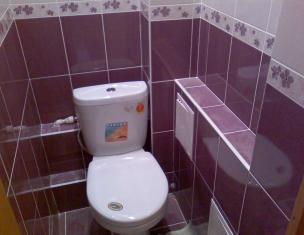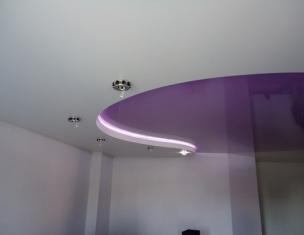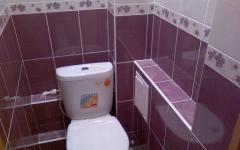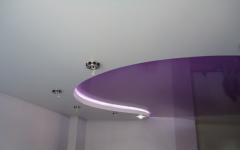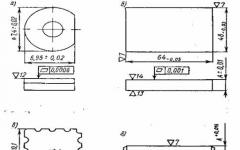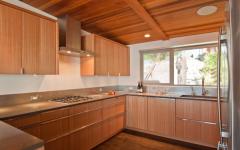There is a saying in the world: “You are greeted by your clothes...” In the world of interiors, there is a similar rule, only it applies to the hallway. Your guests will only stay in this area for one or two minutes, but it is here that they will get the first impression, as we know, the most memorable, about the interior of your home. Therefore, the situation in the hallway needs to be thought through in the most serious way.
It is unlikely that you will find two identical houses in one country village. Like their owners, they are at least somewhat different. Accordingly, the hallway in each house has its own characteristics; rules and standards do not exist here.
The entrance to the house can be designed:
- long and narrow;
- wide and short, sometimes even square;
- spacious or cramped.
Let's look at the most common cases.
Long hallway design
It is better to divide a narrow and long room into two – an entrance hall and a hall. This can be done visually using different colors or finishing materials, or by installing a partition with a door. In the first case, there may be tiles or linoleum on the floor at the entrance, and parquet or carpet in the hall. An excellent solution is multi-level floors, when the hallway is separated from the hall by several steps.

Photo: Design of a long and narrow hallway in a country house
Furniture can also be divided. Place mirrors on the facade near the door, and a wall shelf with a pull-out seat or pouf in the hall. If there is enough space, you can put a chair and a small table. Add a few details: a large vase, a figurine.
Since the hall in this case is perceived as part of the interior, when decorating it, adhere to the style of the whole house.
Interior of a wide hallway
When decorating a wide entrance room, the same rules are followed as for other cases: the floor must be strong enough (tiles or thick linoleum), the walls must be easy to clean, washable paint or decorative plaster is suitable here. In order to highlight such a hallway, various colors, finishing materials, multi-level floors or ceilings are also used.
To sufficiently illuminate the hallway, you do not need to install a bright lamp above the door. It is better to place several sources that provide warm, muted light: two or three small or spotlights, a sconce on the wall near the mirror, or a compact chandelier.

Since you have plenty of free space, you can arrange comfortable and roomy furniture:
- a wardrobe that easily fits all outerwear, umbrellas, bags and capes;
- a chest of drawers on which you can place one of the lamps or a bronze figurine;
- one or two bedside tables with a soft top for sitting.
Often in a wide and spacious hallway you can even see a grandfather clock. The measured, cozy tapping of the pendulum creates an amazing aura of serene calm in the room, conducive to pleasant and confidential communication.
Small hallway design
Unfortunately, the dimensions of hallways do not always have sufficient area. Small spaces contribute little to creative inspiration and rapid flights of imagination in the sensitive soul of a designer, but even in such extremely cramped conditions you can create a cozy, inviting and - most importantly - original environment.

Let's start with finishing the floor. The hallway differs from other rooms and areas in the house in that people almost always wear street shoes here. Therefore, the choice of floor covering for this part of the home is dictated not so much by aesthetic preferences as by practical necessity. The best option in these conditions would be ceramic tiles. It is quite strong, durable and washes very well.
If you don’t like the tile option because of the high cost or for other reasons, install linoleum. Linoleum coating can be:
- household;
- commercial
The first is designed for use in living rooms, kitchens and other rooms where the load on the floor covering is very small and does not exceed the level of slippers or the wheels of a household vacuum cleaner. There is no need for such linoleum in the hallway, since it will have to be changed almost after every holiday.

We need a second - commercial - type of linoleum. It is designed for use in premises such as offices, shops and others with a large number of people who are not wearing flip-flops. Such a coating will easily withstand not only the sole of a harsh man's shoe, but also a sharp lady's stiletto heel, the wheels of a heavy travel bag and similar tests.
It is better to paint the walls. This finish will give them a wonderful appearance and dirt can be removed easily and quickly.
As for the color of the finish, there are no specific rules. Rely on your taste and do not choose materials that are too light, on which dirt and dust will be especially noticeable. Please note that using color you can successfully outline the hallway area.
Sometimes some owners try to do this with the help of additional furniture (cabinets or benches), separating the hallway area from the corridor. This setting only emphasizes the small dimensions of the room and enhances the feeling of cramped space. But if you decorate the walls and floor of the hallway with other materials or a different color, it will turn out just great!

In a compact hallway, proper lighting plays an important role. The best option is a point source of light, not dim, but not bright either, because hardly anyone will read here. With the help of a lampshade, such a “cozy” warm light can be concentrated on the area near the door and closet, then the corners and walls will disappear into twilight, and the room will no longer seem small and cramped.
Now that everything is almost ready, you can add a few details. A painting on the wall or a small plant (even an artificial one) will add coziness to your hallway and make it feel lived-in. And, of course, don’t forget about the mirror: it’s very difficult to imagine a hallway without this accessory.
Photos of hallway interiors in private houses
The photographs presented show a variety of design options for corridors in private homes; here you can see interesting solutions for decorating narrow rooms and design options for large halls.








